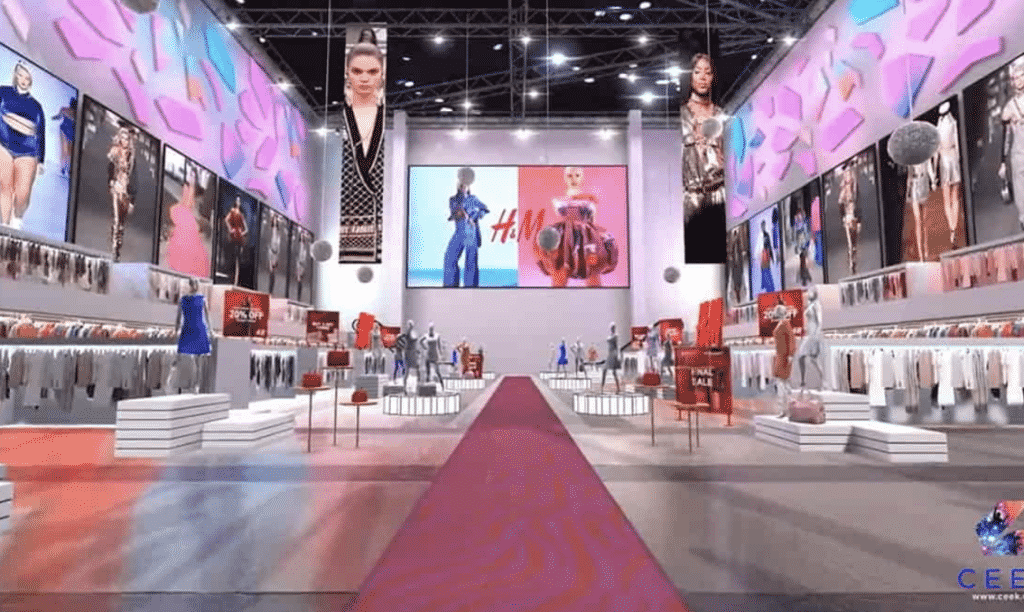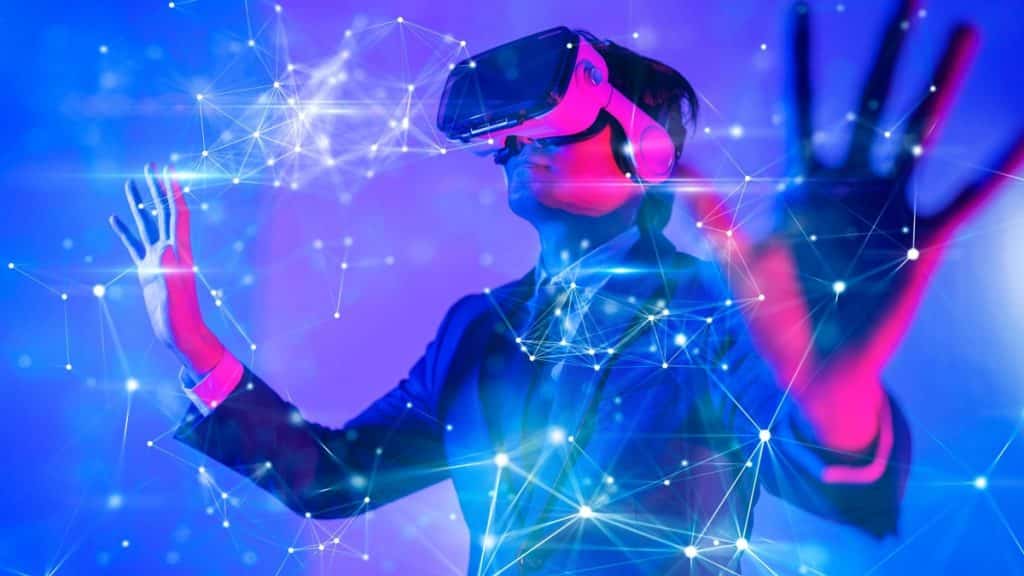The metaverse industry is forecasted to become an $800 billion industry by 2024, with large investment banks JP Morgan and Goldman Sachs predicting the market could be worth anywhere between $1 trillion and $12 trillion in the near future.
But what is the metaverse, how does it work, and what are its primary use cases? In this guide, we’ll explain everything you need to know about the metaverse and provide examples of existing and future possible functionalities.
What is the Metaverse?
Metaverse has been primarily used by the gaming industry, which is estimated to be worth $154 billion globally as of 2021, according to Statista. Roblox, Sandbox, or Decentraland are among the most popular metaverse games.
The metaverse is a concept of a virtual world where people can interact as avatars wearing a virtual reality (VR) headset. Just like with an online website, users can access these virtual worlds through a 3D interface via the web, the VR headset makes the experience fully immersive. Digital assets, virtual land or real estate, NFTs can be purchased in digital currency.
Users can game, socialize, shop, or attend events virtually from the comfort of their own home, interacting face-to-face or avatar-to-avatar. Whereas video calls in 2D have limitations, like not seeing each others’ body language, metaverse enables a more personal connection.
A Brief history of the Metaverse
While metaverse might seem like a new concept, the idea of a virtual world and metaverse term isn’t. Technically, it’s been around since 1970, when a computer-generated virtual tour of Aspen, Colorado, called Aspen Movie map, was created.
Then, in 1838, the first concept of a single 3D image by scientist Charles Wheatstone surfaced, which led to the creation of technology that uses depth illusion to create an image.
And in fact, the term “metaverse” comes from Neil Stevenson’s novel 1982, Snow Crash. In his book, he describes a virtual place where characters of the book could escape reality. So this is where Meta, formerly known as Facebook, got its name.
In the early 1990s, a global video gaming and entertainment company Sega headquartered in Tokyo, Japan, came out with the first VR arcade machine with a VR motion simulator.
Fast-forward three decades later, in 2010, an entrepreneur Palmer Luckey built the first revolutionary VR headset called Oculus Rift VR, and in 2014, Facebook acquired the company in a $2 billion deal.
A few years later, in 2021, Facebook changed its name to Meta and announced its plans to focus on shaping the future of the metaverse – the concept as we know it now was born and started gaining traction.
Metaverse is not a Completely New Concept
We had already seen games like Second Life from 2003 and The Sims from 2000 that have tried to offer similar virtual reality experiences, where your avatar can interact with other people or avatars in a virtual world, building houses and living in a fantasy world.
However, the trend never really caught on, but maybe immersive 3D technology, a VR headset, and solutions like the Virtuix Omni, an omnidirectional treadmill can make the virtual reality games but also other use cases even more real.Now that technology can increasingly support the further development of the metaverse, perhaps things are bound to change.

And these changes are already happening, for instance, in March 2021, the first major metaverse game, Roblox, went public, as the online game platform usage spiked in popularity during the Covid-19 pandemic in 2020. Moreover, several large corporations including Nike, American Express, Mastercard, Taco Bell, or Meta, have filed their metaverse trademark applications or released their NFTs.
What are some Metaverse use Cases?
The video game industry has pioneered the immersive virtual reality metaverse experience. Widely popular metaverse games like Roblox, Axie Infinity, or community-driven Sandbox and Decentraland by a decentralized autonomous organization (DAO), are the first largely successful of their kind.
Players can acquire virtual land or real estate, build, or purchase other digital assets in the game’s own cryptocurrency. William Quigley, one of the founders of Tether stablecoin (buy USDT), believes metaverse’s prime revenue model in the future will be NFTs and crypto.

And even though metaverses’ first and primary use case so far has been gaming, virtual events have also been held on the metaverse. For example, metaverse platform Decentraland hosted its first Metaverse Fashion Show in 2022, where well-known labels from Tommy Hilfiger or Dolce & Gabbana took part.

In another instance, metaverse platform Roblox has hosted several virtual events, where celebrity artists including Tai Verdes, Zara Larsson, and Lil Nas X have hosted virtual concerts. Viewers can take part from their homes and socialize with others at the event.

Even though these events make it seem promising, things are still in infancy and developing as technology advances. Virtual reality requires enormous energy, data storage solutions, graphic 3D design, virtual headsets, as well as lighting-speed connectivity.
Metaverse could offer several other innovative opportunities for different use cases in the future. The metaverse can make online work meetings more personal or be used for virtual shopping. What is more, all of this could help companies double down on travel costs and renting physical spaces.
Some use-cases that can benefit from virtual reality:
● social interactions with friends and family;
● manufacturing and production.
For example, in a work environment, metaverse could allow us to collaborate better while working remotely. In shopping and retail, people could see items in 3D, try them on in a virtual environment, or speak to a shop assistant to get physical items delivered to their house.

In 2022, rumors that fast-fashion clothing giant H&M is planning to open its first virtual 3D store. However, a spokesperson has since denied all claims.
Wrapping Up
Metaverse is still evolving – different virtual reality platforms are still operating separately, and no one knows how things will play out in the future. Whether one unified metaverse where we can work, shop, play, socialize, and attend events, using digital currencies will become true.
In gaming and for virtual events, metaverse platforms are already being used, however, whether the concept that Meta has in mind will become true is yet to be seen. What’s good is that if the idea succeeds, metaverse presents opportunities for several new technology companies that can offer services for the development of the metaverse. For example, 3D content creation, content delivery, cybersecurity, virtual reality headsets, or data storage providers.
